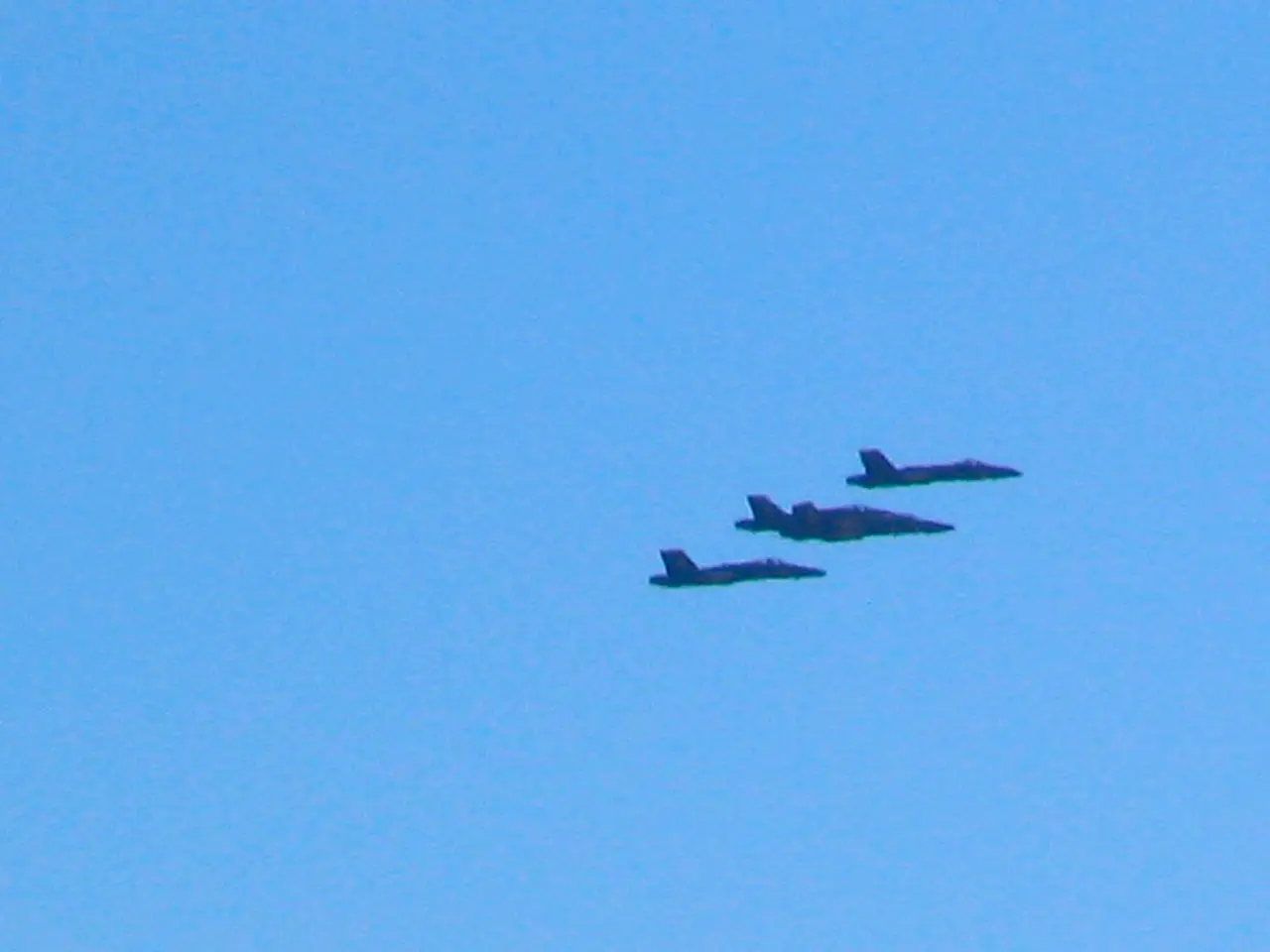Autonomous Teal Drones Collaborate with Palladyne Pilot AI Software
In a significant development, Palladyne AI Corp has announced the advancement of its Palladyne Pilot AI software, designed to facilitate autonomous multi-drone collaboration. This software, which integrates with existing autopilot systems, enables real-time sensor fusion and navigation optimized for low connectivity environments [1][3].
The software has been successfully tested in autonomous flight tests involving multiple drones, such as three heterogeneous drones from Red Cat subsidiary Teal Drones, coordinating in real-time to track dynamic and static ground targets like humans and vehicles [1][3]. This collaboration allows for distributed detection and situational awareness across the drone team, crucial for responsiveness in environments with limited or intermittent connectivity [1][3].
Palladyne Pilot AI leverages edge computing and decentralized control logic, ensuring autonomous operations and coordination without dependency on a centralized command center or continuous data links [1][3]. This enhances resilience in contested or infrastructure-poor settings.
The software also incorporates cybersecurity enhancements, such as with the OS3 cybersecure system by Mobilicom, to ensure secure operations in complex environments [2]. The system is positioned for use in defense (ISR, tactical autonomy) and commercial sectors (public safety, security surveillance, logistics, utilities), addressing growing demand for autonomous aerial coordination under diverse operational constraints [1][4][5].
Initial multi-drone flights, including two- and three-drone autonomous missions, were completed successfully between late 2024 and mid-2025, evidencing technological maturity and readiness for commercial rollout [1]. Palladyne AI Corp anticipates that Palladyne Pilot software will be commercially available by the end of the first quarter of 2025.
Geoff Hitchcock, the chief revenue officer at Red Cat Holdings, has stated that they look forward to engaging with customers to showcase the value of this joint-solution. Matt Vogt, the chief revenue officer at Palladyne AI Corp, has stated that the integration of Palladyne Pilot AI software into Teal drones is a step in the partnership announced with Red Cat last summer.
The autonomous collaboration capability of multiple drones enabled by Palladyne Pilot software is expected to provide a substantial tactical advantage to the warfighter in the field, improving situational awareness. The flight demonstration showcases the software's ability to identify, prioritize, and track objects of interest on the ground.
However, no new information was given about the potential customers for this joint-solution or any plans to showcase its value. Furthermore, no new statements were made about the collaboration by Geoff Hitchcock, the chief revenue officer at Red Cat Holdings.
References:
[1] Palladyne AI. (2025). Palladyne Pilot AI Software Enables Autonomous Multi-Drone Collaboration. [Press Release]
[2] Mobilicom. (n.d.). OS3 Secure Mobile Networking. [Product Page]
[3] Teal Drones. (n.d.). Teal Drones Product Line. [Product Page]
[4] Association for Unmanned Vehicle Systems International. (n.d.). Commercial Applications. [Website]
[5] U.S. Department of Defense. (n.d.). Unmanned Aircraft Systems. [Website]
The Palladyne Pilot AI software, an advancement in technology, integrates artificial-intelligence to facilitate autonomous multi-drone collaboration, as seen in testing with Teal Drones, and this collaboration offers distributed detection and situational awareness for responsiveness in environments with limited connectivity.
In the defense sector, this software is expected to provide a substantial tactical advantage to the warfighter, enhancing situational awareness and flight capabilities, while in commercial sectors, it addresses growing demand for autonomous aerial coordination under diverse operational constraints.




